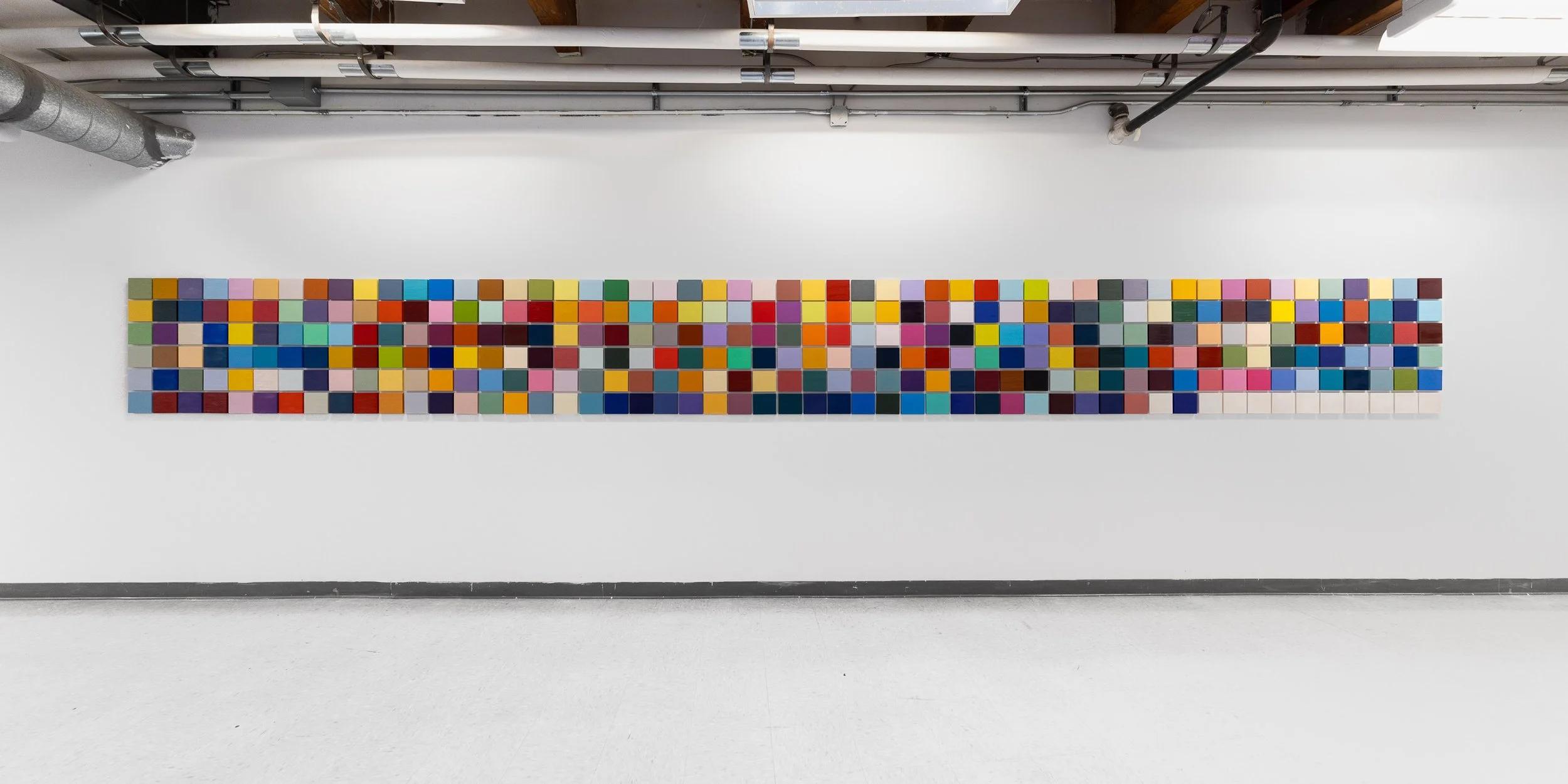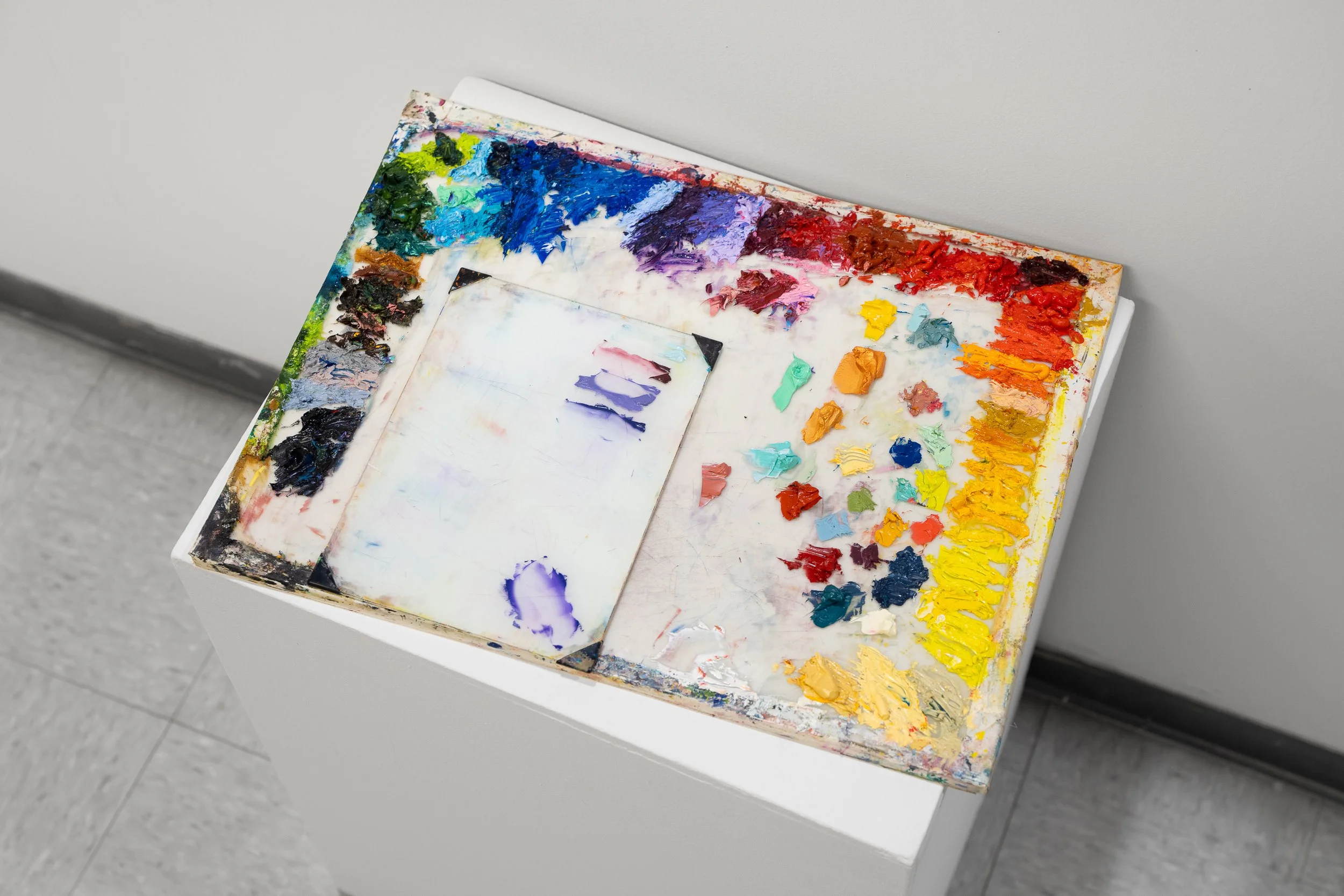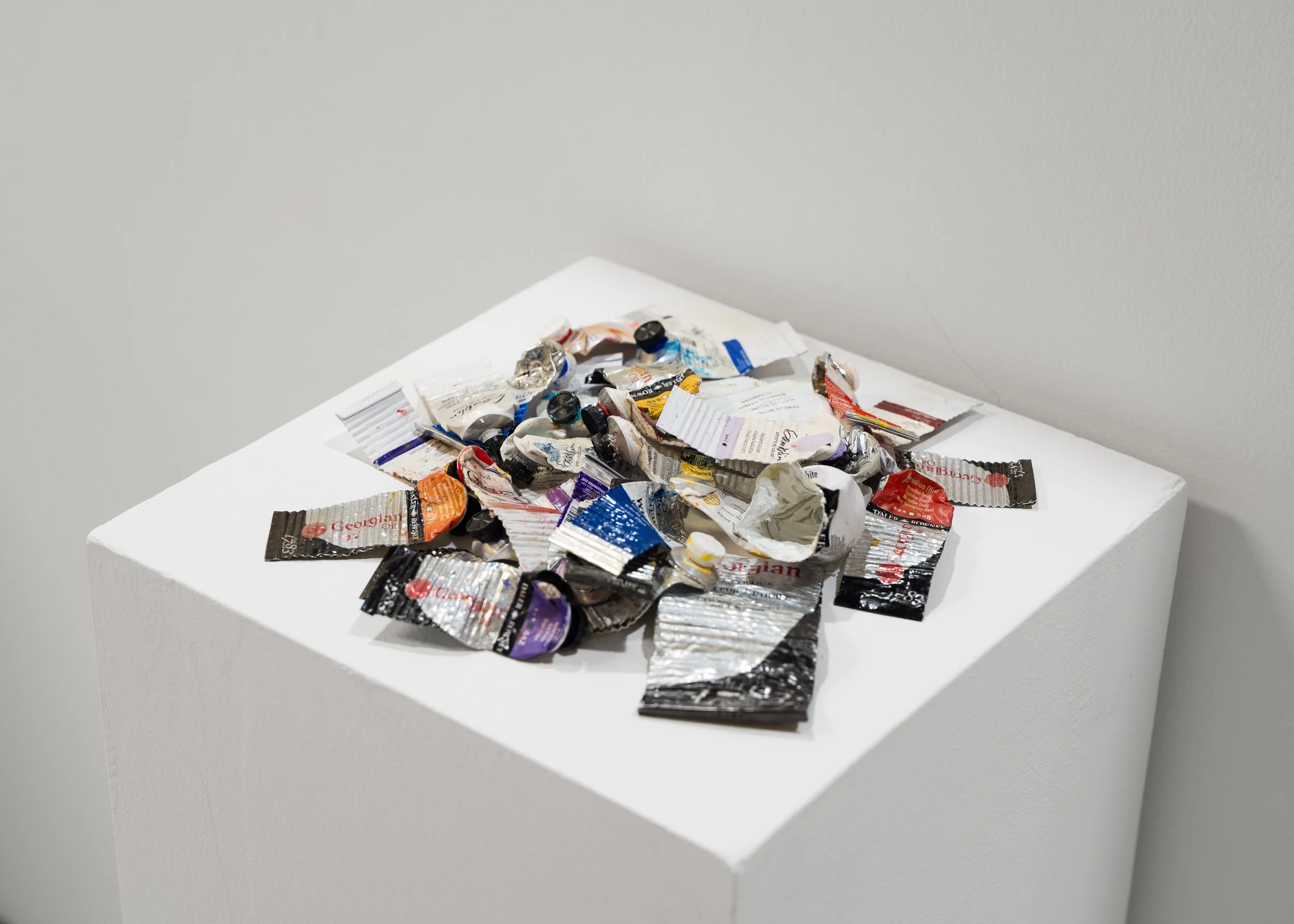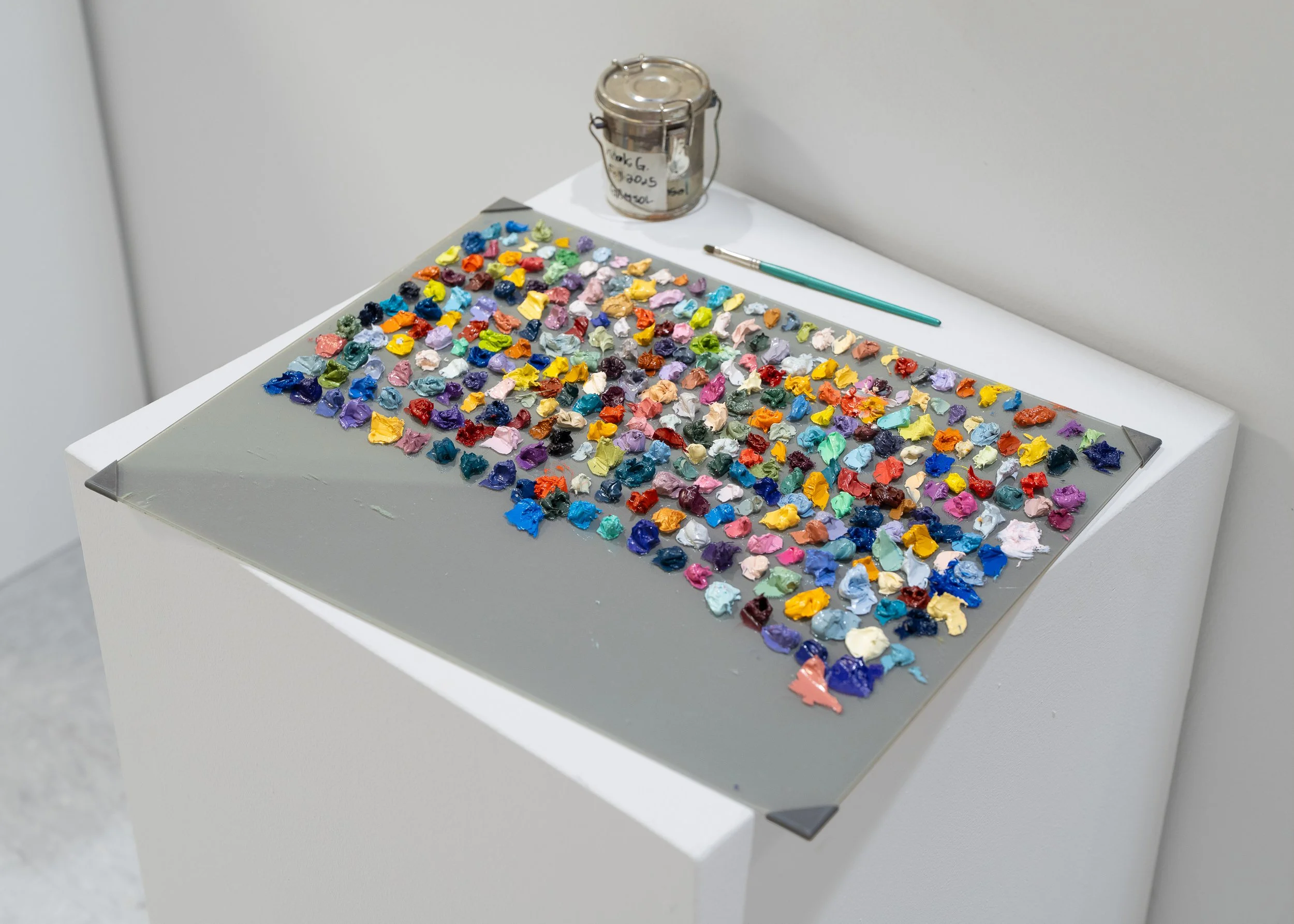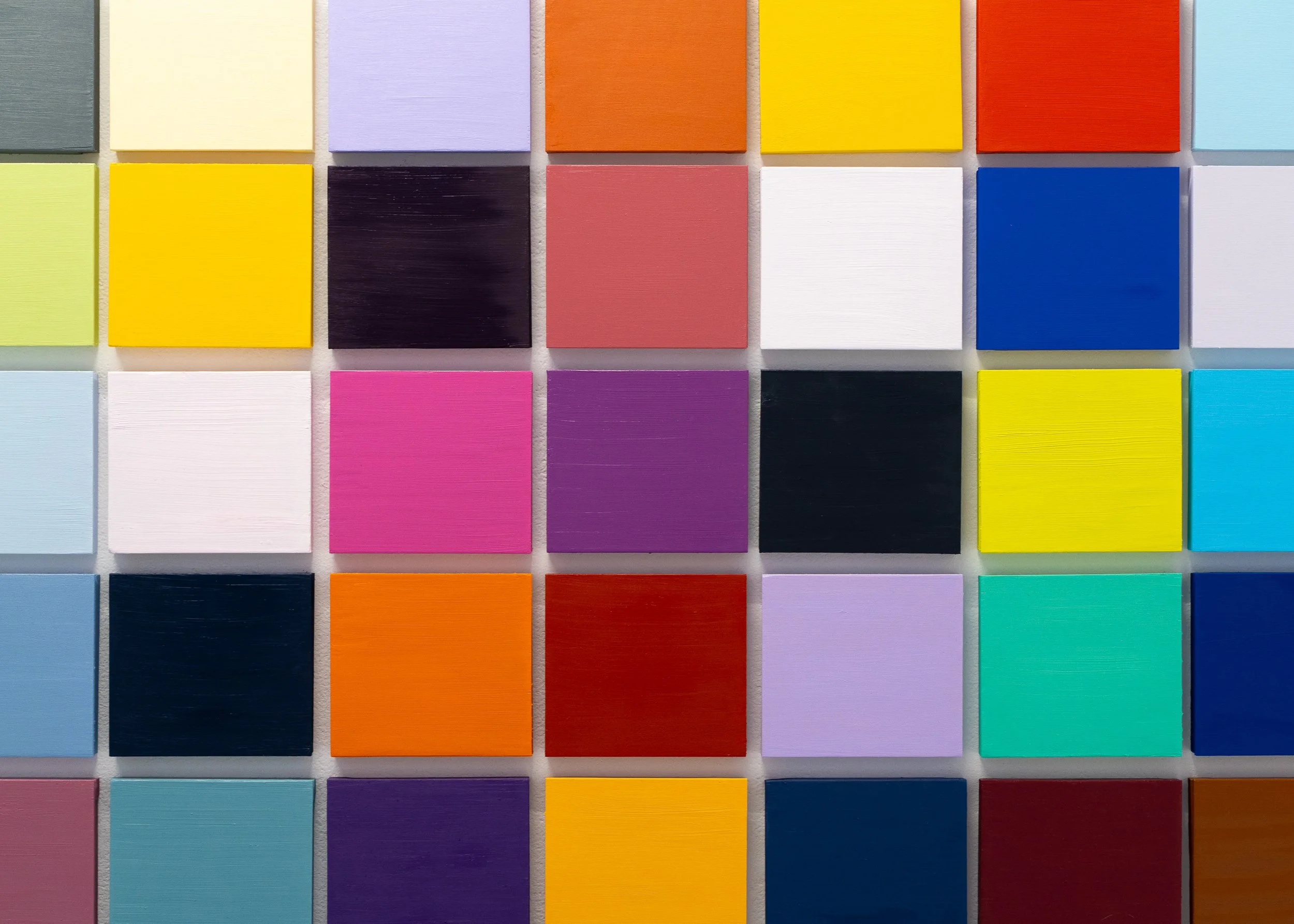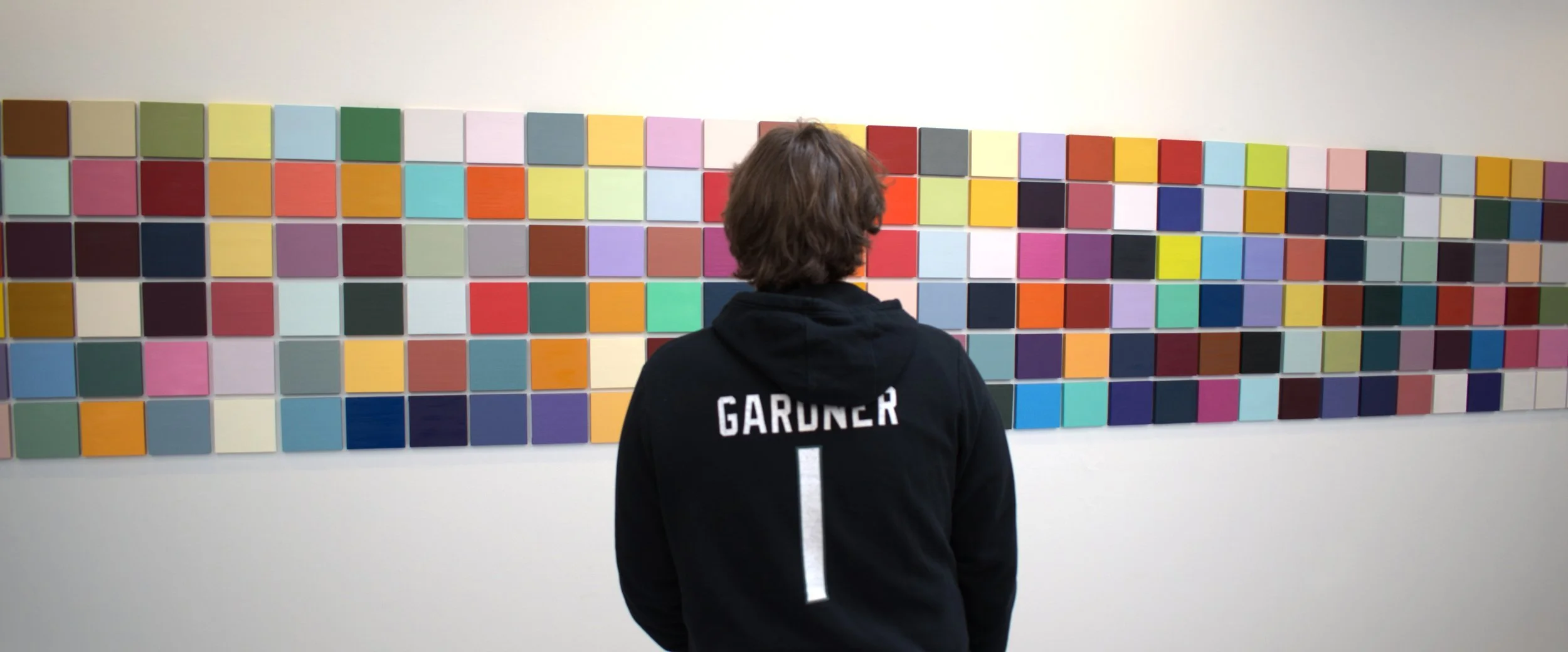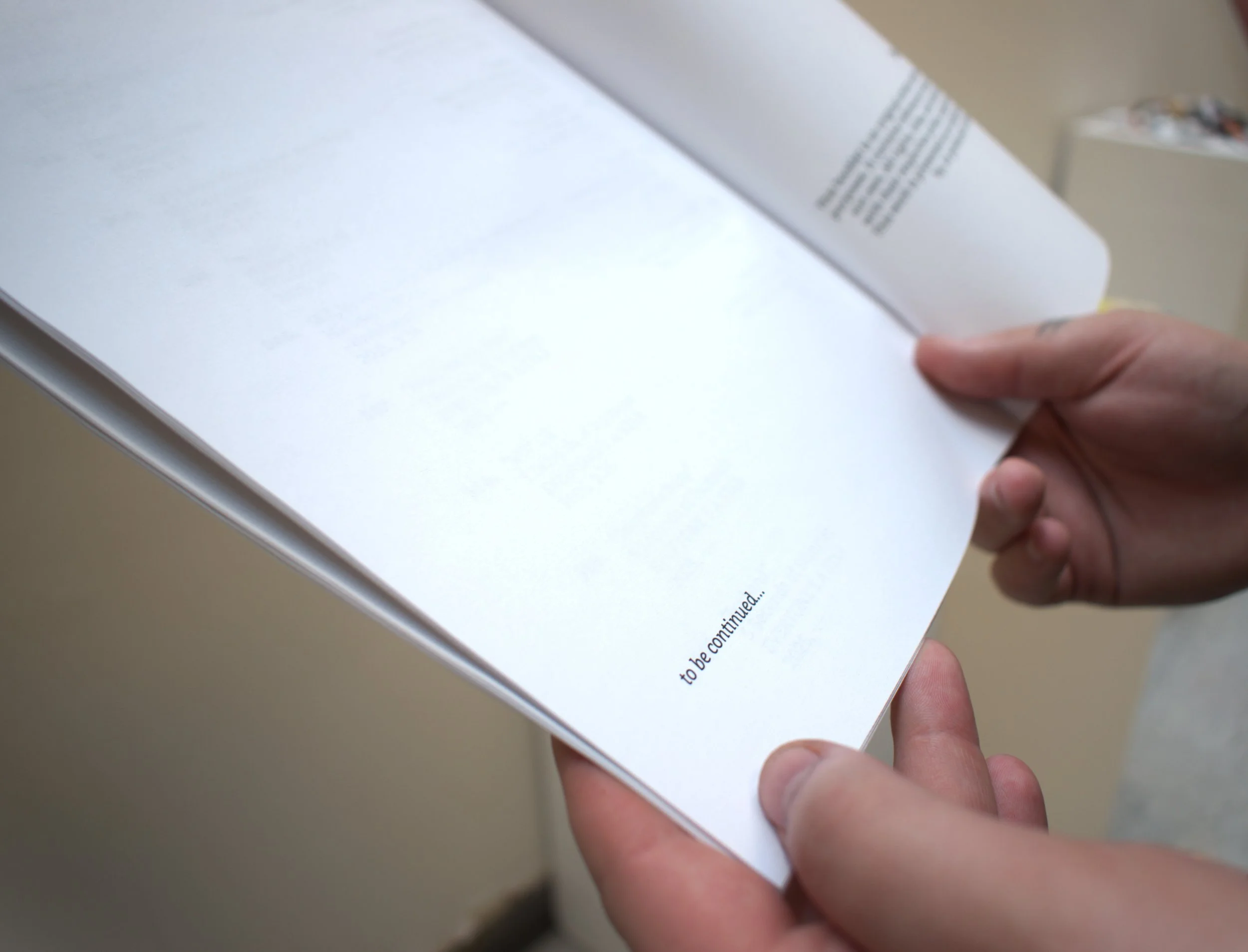Seeing Sound - Meraki Gardner, 2025
Seeing Sound is a visual translation of an auditory archive, a way of mapping what it means to listen, to care, and to remember through color. The work is composed of 318 individual panels, each representing a song from 5 Seconds of Summer’s discography, including their collaborations, unreleased tracks, and solo work. The project began as an attempt to give sound a physical form, but it quickly became something more intimate. It became a form of self-portraiture built from years of listening.The process is meditative, almost ritualistic. I listened to each song over and over, letting it play until the right color surfaced; until the sound felt like something I could hold. I mixed and remixed paint, adjusted hue and saturation, layered and repainted until the emotion of the track was captured through color alone. The repetition of this process, 318 times over, mirrors the obsessive nature of fandom itself, the way devotion often blurs the line between artist and listener, self and sound. Each panel holds a personal association, a memory, or a sensory echo. I pull the inspiration from the color of a lyric, the feeling of a concert, the weight of a moment that music carried me through. When assembled together, the grid becomes an archive of attachment, a record of growth and evolution, both mine and the band’s. It is an act of preservation, an attempt to document how songs, over time, become part of the structure of self.Seeing Sound also challenges the boundaries between abstraction and representation. While it appears as a grid of pure color, the work is rooted in deeply personal associations and experiences; each hue is a representation of sound and emotion rather than an abstraction of it. The result is both systematic and deeply sentimental, a study in how color, like music, can hold memory, emotion, and transformation all at once. To me, this work is more representational then my work in the past. Ultimately, this project is about translation: the effort to turn what is heard into what can be seen and felt. It’s about music as a mirror, about devotion as a form of survival, and about the possibility that, sometimes, seeing sound can mean seeing yourself more clearly too.-Meraki Gardner ‘25
